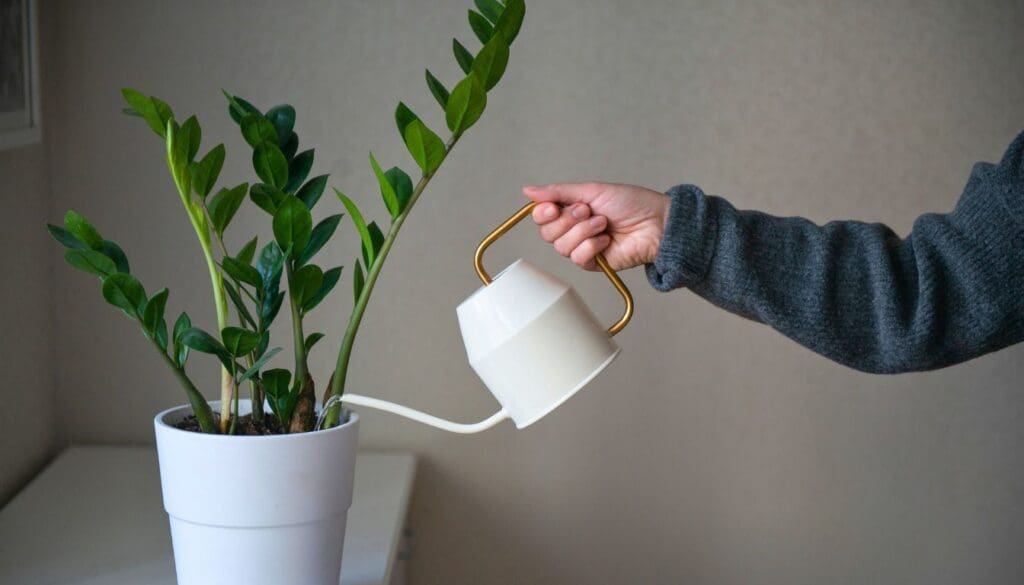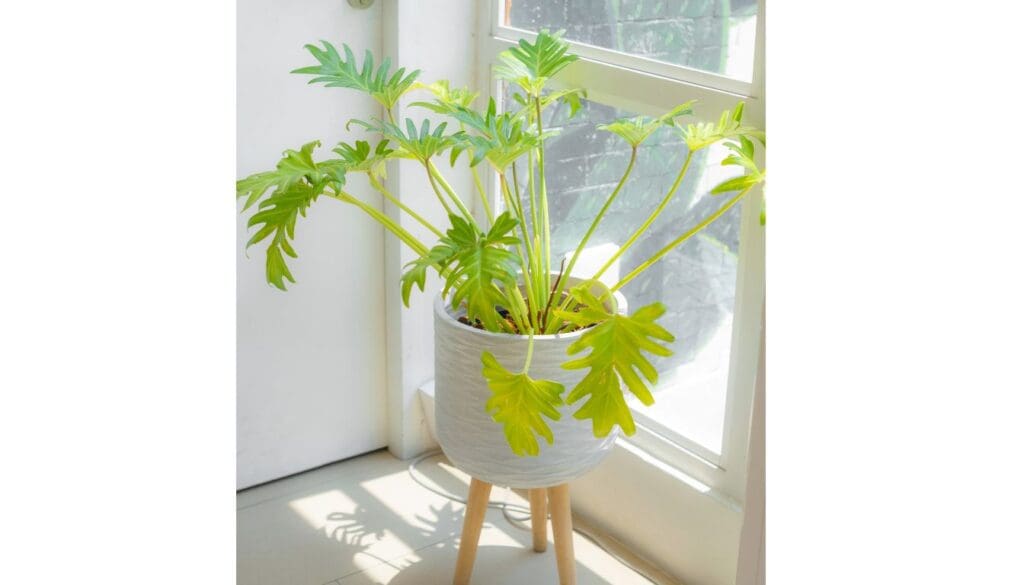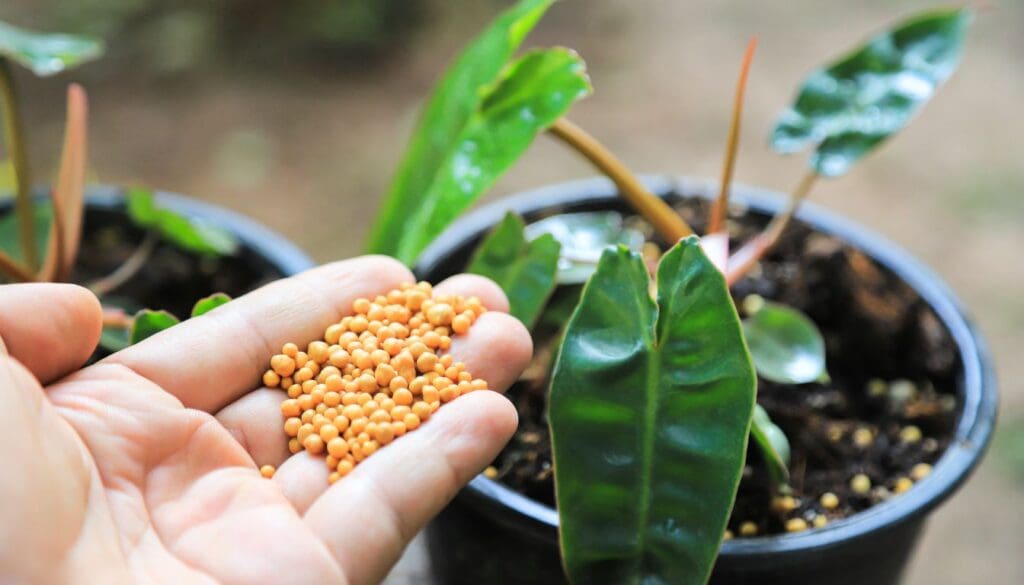6 Surprising Things That Stress Out Your Plants in Summer and How to Help
Summer’s usually my favorite time to hang out in the garden, but sometimes I catch my plants looking a bit worn out or just not as lively as I’d hoped. Turns out, hot weather brings more headaches than just dry soil.
I’ve picked up on a few sneaky things that can really stress out my plants in summer. Knowing what to keep an eye on definitely helps me keep the garden looking good, even when the sun’s relentless.
Please note: Simplify Plants is reader-supported. Some links in the post are affiliate links and I get a commission from purchases made through links in the post.
1) Overwatering during hot afternoons

I’ve realized watering plants at the hottest time of day can actually do more harm than good. Water just evaporates so fast that the roots barely get a chance.
Too much water in the heat can also mess up the roots. If the soil gets soggy, oxygen can’t reach the roots, and then you end up with weak or even rotting roots.
So, I try to water early in the morning or wait until evening. That way, the water sticks around longer and the roots can actually use it.
It’s tempting to think more water is always better when it’s blazing outside. But honestly, overwatering in the afternoon can backfire.
I check the soil about an inch down and only water if it feels dry. With that routine, I save water and my plants seem way happier.
2) Too much direct midday sun

I’ve seen my plants struggle when the midday sun gets intense. Direct sunlight at noon can really burn leaves, especially if the plant prefers some shade.
Sometimes the leaves go crispy or get weird brown spots. Young or delicate plants can get stressed super quickly in that kind of heat.
When the sun’s at its peak, I try to give my sensitive plants a break—maybe a patio umbrella or just moving pots under a tree.
If I spot wilting or strange leaf colors, that’s my cue to step in. Even tomatoes, which love sun, seem to perk up with a little shade in the afternoon.
Just paying attention and shifting pots around can make a surprising difference. The midday sun is no joke—sometimes I forget how harsh it really is.
3) High soil salinity from fertilizers

People always say fertilizer is great, but honestly, too much can backfire. When I go heavy on chemical fertilizers, salts just start piling up in the soil.
High soil salinity makes it tough for roots to soak up water. In the heat, that’s a recipe for trouble.
I’ve noticed dry or burnt-looking leaf edges sometimes. Or my plants just stall out and look sad. Too much salt acts like a wall, keeping roots from getting what they need.
If the soil feels crusty, that’s usually a red flag. Even tap water with lots of minerals can add to the problem.
I’ve started watering deeply but less often, just to flush out those extra salts. I also lean toward less fertilizer or organic stuff that breaks down slower.
A quick soil test now and then helps me catch issues early. Keeping tabs on the soil really pays off.
4) Sudden temperature drops at night

Summer nights aren’t always as warm as you’d think. Sometimes the temperature drops fast, and my plants just aren’t ready for it.
When it goes from blazing hot to chilly in a few hours, plants can get pretty stressed. I see droopy leaves, and sometimes growth just seems to pause.
Tender plants like tomatoes or basil really notice the change. If it gets much colder at night, they struggle to bounce back.
Young plants and seedlings often show the first signs of trouble. I make a habit of checking them in the morning for wilting or curled leaves.
If the forecast looks cool, I’ll throw a light cover over the most sensitive ones. Even crowding pots together helps a bit.
It’s wild how just a few degrees can make a difference. Night chills don’t usually kill plants, but they sure slow things down.
5) Using cold tap water for irrigation

I used to grab the hose and water without thinking, but now I know really cold tap water can shock roots. Plants can end up droopy or just stop growing for a bit.
They’re sensitive to sudden temperature swings. Pouring icy water onto warm soil is a quick way to stress them, especially in summer.
Letting the tap water sit out for a while helps it warm up to room temp. That way, my plants aren’t in for a shock.
For indoor plants, I stick to water that’s lukewarm or just cool. It sounds fussy, but honestly, I see fewer problems when I do this.
If the only option is cold water, I fill the watering can and let it sit in the sun for a bit. The warmth makes it much gentler on the roots.
Skipping cold water is such an easy win for plant health—it’s one of those little things that makes a big difference.
6) Excessive wind drying leaves

I always forget about the wind until I see the damage. Even a steady breeze can dry out my plants faster than they can keep up.
At first, everything looks fine, but then the leaves start turning crispy at the edges. Wind even pulls moisture from the soil, so plants get thirsty way quicker.
Strong gusts can tear leaves or snap stems, which is just frustrating to see. Sometimes my plants even lean away from the wind, like they’re trying to hide.
I try to move pots out of the wind if I can, or use a fence or taller plants as a shield.
If something can’t be moved, I just check the soil more often and water as needed. With a bit of extra care, my plants usually bounce back, even on windy days.
How Plants Respond to Summer Stress
Plants have their own ways of dealing with heat, drought, and too much sun. Sometimes I don’t notice until things are already looking rough.
Understanding Plant Stress Signals
When summer stress hits, my plants usually tell me right away. Wilting leaves are the first thing I spot—if they’re curling or drooping, the plant’s struggling to keep water.
Leaf discoloration is another big sign. I see yellow, brown, or crispy spots, and sometimes flowers drop early or buds just stay closed.
If I look closer, I might see stunted growth or fewer blooms and fruits. Some plants even fold their leaves to save moisture.
Noticing these signals early helps me jump in and fix things before it gets worse.
Short-Term Versus Long-Term Effects
Summer stress can hit fast or creep up over time. Short-term issues like wilting or leaf drop are usually pretty easy to fix with some water or shade.
But if the stress sticks around, I notice slower growth and fewer flowers, which is always a bit disappointing. Long-term problems, like repeated drought, can leave plants weaker and more likely to get sick.
Sometimes roots just stop growing altogether, which means the plant can’t get enough water or nutrients. Knowing the difference helps me adjust how I care for my plants all season.
Preventing and Easing Summer Stress in Plants

Hot weather can make plants struggle, but a few tweaks in my routine really help. Even small changes in where I put things or how I water can make a big difference.
Proactive Care Strategies
I always water early while it’s still cool. It gives plants time to soak up moisture before the sun gets intense.
I try not to get water on the leaves, since that can spread diseases. A 2–3 inch layer of mulch keeps roots cooler and holds in moisture, plus it cuts down on weeds.
Checking leaves every day helps me catch wilting or burned edges fast. If a plant’s struggling, I’ll move it to a shadier spot or throw a row cover over it.
When pruning, I leave a few extra leaves so the plant can shade itself. And I avoid heavy fertilizing during heatwaves—roots just can’t handle it.
How Microclimates Affect Plant Well-Being
Microclimates are little pockets in my yard with their own temps and light. Next to a fence might be hotter, while a shady corner stays cool and damp.
I pay attention to which spots get all-day sun versus filtered light. Sensitive plants go in the cooler areas, sun-lovers get the hot spots.
Big pots and containers are great because I can move them if things get too intense. Trees, walls, and sheds all change how much heat, wind, or shade a plant gets.
By noticing and using these microclimates, I give my plants a better shot at surviving even the roughest summer days.
Frequently Asked Questions
Summer throws a lot at my plants. High heat, intense sun, and not-so-great watering habits can all lead to stress.
How can high temperatures affect plant health during the summer months?
When it gets hot, my plants might wilt or stop growing. Sometimes the heat damages leaves and roots, and a few plants will even drop their flowers or fruit early.
What are some signs that my plants are experiencing heat stress?
I usually spot wilting, leaf burn, or brown spots first. Sometimes, the leaves just start turning yellow or curling up, and honestly, that’s never a good sign.
If my plant looks droopy even after I’ve watered it, it’s probably stressed out.
Can too much sunlight harm my plants, and how can I protect them?
Absolutely, too much direct sun—especially right around midday—can really scorch those leaves. I like to use shade cloth or just move my potted plants out of that harsh sun when I can.
A little afternoon shade helps a lot. Sometimes I just wish I could give them sunglasses!
What watering techniques should I use to prevent summer stress in plants?
I always water early in the morning or later in the evening, never during those blazing hot afternoons. Slow, deep watering works better than a quick splash, at least in my experience.
I also steer clear of ice-cold tap water—honestly, that can really shock the plants.
Why is proper soil maintenance important for plant stress prevention in hot weather?
Good soil holds onto water but doesn’t get all soggy and gross. I check for high soil salinity now and then, since too much fertilizer can cause problems I’d rather avoid.
Mulching helps keep my soil cool and moist, which seems to make the plants way happier.
How do pests and diseases contribute to plant stress in summer, and what can I do about it?
Pests seem to multiply like crazy once the weather heats up, and honestly, they can really take a toll on my plants. Diseases love the hot, sticky conditions too.
I try to keep a close eye on everything, picking off any sick-looking leaves when I spot them. It’s not foolproof, but it helps keep things from getting out of hand.
Recommended Garden Supplies
| Product Image | Our Recommended Gardening Supplies | Check Offers! |
|---|---|---|
Top Top
Top
Top
Top
Top
Top
Top
Top | rePotme Houseplant and Tropical Classic Potting Soil Mix | Check Offer On Amazon |
 Top
Top
Top
Top
Top
Top
Top
Top | Espoma Organic Indoor Plant Food | Check Offer On Amazon |
 Top
Top
Top
Top
Top
Top
Top
Top | GooingTop LED Grow Light 6000K Full Spectrum Clip Plant Growing Lamp | Check Offer On Amazon |
 Top
Top
Top
Top
Top
Top
Top
Top | Soil Moisture Meter | Check Offer On Amazon |
 Top
Top
Top
Top
Top
Top
Top
Top | Govee Hygrometer Thermometer, Bluetooth Enabled! | Check Offer On Amazon |
 Top
Top | LEVOIT Humidifiers for Large Room(Best For Plants) | Check Offer On Amazon |
 Top
Top
Top
Top
Top
Top
Top
Top | Upgraded DIY Automatic Drip Irrigation Kit, 15 Potted Houseplants Support | Check Offer On Amazon |
 Top
Top
Top
Top
Top
Top
Top
Top | Stainless Steel Heavy Duty Gardening Tool Set | Check Offer On Amazon |
 Top
Top
Top
Top
Top
Top
Top
Top | Bonide Insecticidal Soap | Check Offer On Amazon |
 Top
Top
Top
Top
Top
Top
Top
Top | Bonide 32 oz Spray Neem Oil for Organic Gardening | Check Offer On Amazon |
 Top
Top
Top
Top
Top
Top
Top
Top | Garden Safe Fungicide | Check Offer On Amazon |






